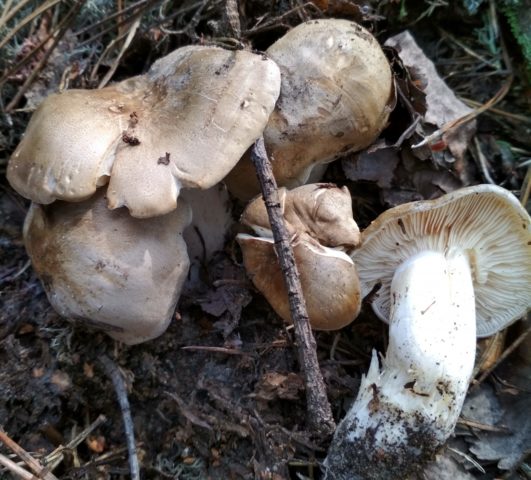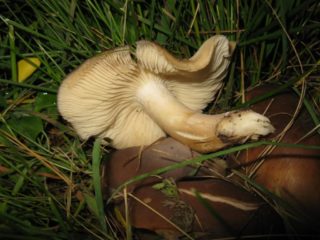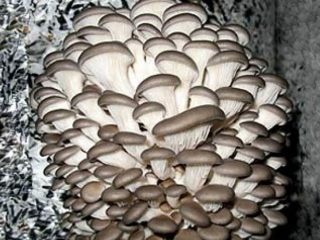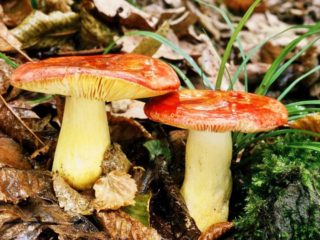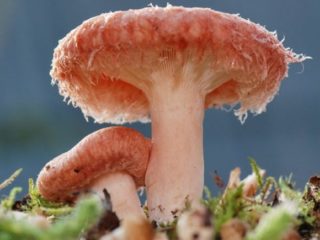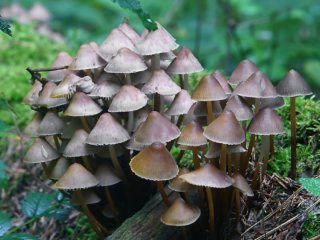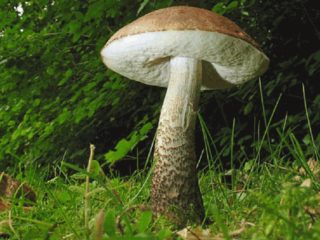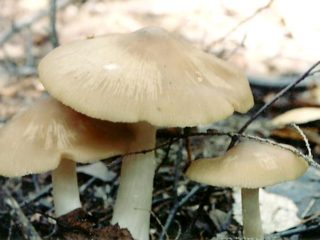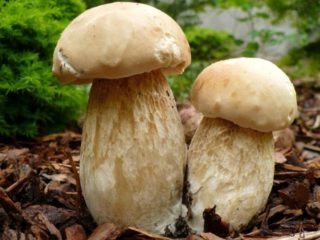Content
Lyophyllum shimeji is a mushroom from the Lyophyllaceae family, belonging to the order Lamellar or Agariaceae. It is found under various names: hon-shimeji, lyophyllum shimeji, the Latin name is Tricholoma shimeji.
What do Shimeji lyophyllums look like?
The cap of a young Shimeji lyophyllum is convex, the edges are noticeably bent. As it grows older, it straightens out, the bulge becomes less noticeable or disappears completely, but a low tubercle always remains in the center. The diameter of the cap is 4-7 cm. The main color is from grayish to brown. The hat can be dirty gray or gray-brown, yellow-gray. But clearly visible radial stripes or hygrophanic spots can be seen on the surface.Some specimens are distinguished by a hygrophanic pattern, reminiscent of a mesh.
Narrow, dense plates form under the cap. They can be located freely or be partially adherent. The color of the plates is white, becoming gray or light beige with age.
The shape of the leg is cylindrical, its height does not exceed 3-5 cm, diameter - 1.5 cm. The color is white or pale gray. When touched, the surface seems smooth or slightly silky; in older specimens you can feel the fibrous structure.
The flesh is elastic, white in the cap, and may be grayish in the stem. The color does not change at the cut or fracture site.
The spores are smooth, colorless, round or broadly ellipsoid in shape. The color of the spore powder is white.
The smell of mushrooms is delicate, the taste is pleasant, reminiscent of nuts.
Where do shimeji lyophyllums grow?
The main place of growth is Japan and the Far Eastern regions. Shimeji lyophyllums are found throughout the boreal zone (territories with well-defined winters and warm but short summers). Sometimes representatives of this family can be found in pine forests located in the temperate climate zone.
It grows in dry pine forests and can appear both on soil and on coniferous litter. The formation season begins in August and ends in September.
A representative of this family grows in small groups or clumps, and is occasionally found alone.
Is it possible to eat shimeji lyophyllums?
Hon-shimeji is a delicacy mushroom in Japan. Belongs to the edible group.
Taste qualities of the lyophyllum shimeji mushroom
The taste is pleasant, vaguely reminiscent of nutty. The pulp is dense, but not tough.
Mushrooms are widely used in traditional Japanese cuisine. They can be fried, pickled, or stored for the winter.
False doubles
Lyophyllum shimeji can be confused with some other mushrooms:
- Lyophyllum or crowded row grows in larger clumps than shimeji. Appears in deciduous forests from July to October. The color of the cap is gray-brown, the surface is smooth, with adhering soil particles. Refers to low-quality edible mushrooms. The pulp is dense, thick, snow-white, the smell is weak.
- Lyophyllum or elm oyster mushroom similar to Shimeji due to the hygrophanic spots located on the cap. The shade of oyster mushroom is lighter than that of shimeji lyophyllum. The legs of elm specimens are more elongated. But the main difference is in the place where the mushrooms grow: oyster mushrooms grow only on stumps and waste of deciduous trees, while shimeji choose soil or coniferous litter. Elm oyster mushroom is an edible species.
Collection rules
There is an important rule for mushrooms: they cannot be collected near garbage bins, city landfills, busy highways, or chemical plants. Fruit bodies are capable of accumulating toxins, so consuming them can result in poisoning.
Use
Lyophyllum Shimeji is consumed after pre-treatment. The bitterness present in mushrooms goes away after boiling. It is not used for food in its raw form. Mushrooms are salted, fried, marinated. Add to soups, sauces, stews.
Conclusion
Lyophyllum shimeji is a mushroom common in Japan. Refers to edible specimens. Grows in clumps or small groups. Twin mushrooms are also edible.
